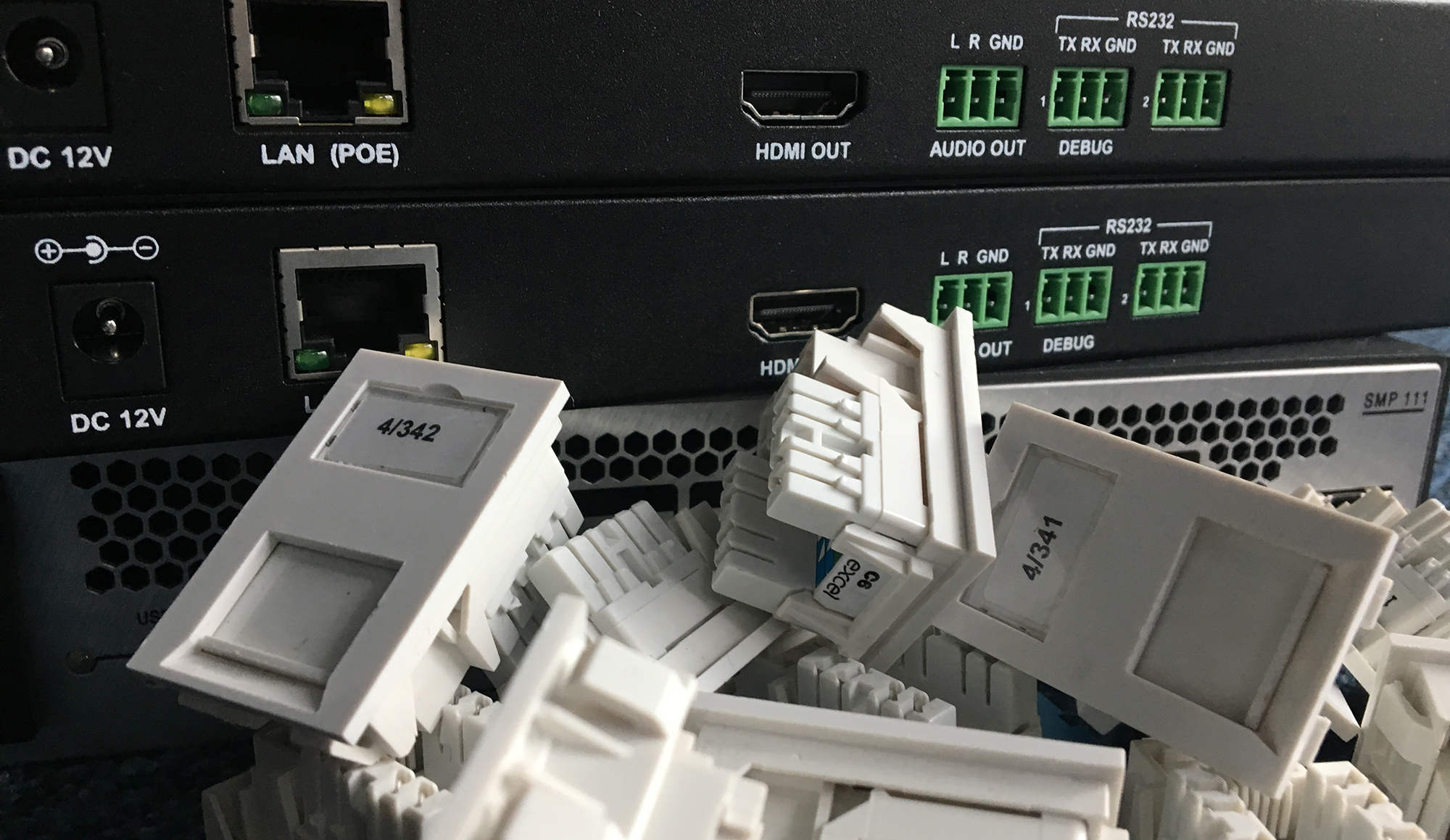Making the move to AV over IP can be daunting especially as, despite advances in technology, there’s no one size fits all solution. Often the requirement will be for a scalable, secure, manageable solution that is capable of handling a large number of endpoints, but with so many options out there it can be difficult to know which one will be most appropriate.
For more info on the basics of AVoIP check out blog: AV over IP explained
Making the wrong choices could be costly, leaving you stuck with a solution that is not fit for purpose and that will likely cost a significant amount to rectify, so always consult an expert to benefit from their wide knowledge of the different options, their pros and cons and how they function in real-world scenarios rather than relying on spec sheets.
So, firstly, when would switching to AVoIP be beneficial? The answer is, pretty much any time real-time high-quality audio and video is in play, particularly at scale. Networked devices are most beneficial in scenarios such as large-scale video distribution throughout an office, building, conference facility or campus, especially where control over which source goes to which destination is required, or divisible spaces where the room needs to be able to flexibly reconfigure based on the position of walls.
So, consider retailers who want to use their digital signage system to increase customer engagement by highlighting promotions, or reach a wider demographic through a varied portfolio of high-resolution content, or even easily add or move displays to capture attention in different parts of a store.
Doing this via traditional AV would be costly and time-consuming with separate systems needed for each element, whereas opting for AVoIP would enable retailers to leverage their existing network infrastructure and utilise software tools to enable this flexibility in a centrally managed way, simplifying both deployment and ongoing management.
Similar scenarios would occur in multiple environments – across a university campus where content can be tailored to location, enterprise-wide to enable video wall management, video/audio distribution, matrix switching, extension and more, and even in medical facilities, enhancing remote consultations and the streaming and recording of procedures.
Each of these scenarios would have different requirements, so key areas to discuss with your integrator include latency, quality and bandwidth to ensure the solution chosen provides the ideal balance for your use case.
For example, lower latency would be required in a medical situation than in retail; but even within retail differences would occur. Smaller stores may require higher quality images as users are likely to get closer to the image, for example. In a corporate setting, anything that sits on the network will have to approved by IT and so must meet the organisation’s security requirements and be network manageable.
Bandwidth demands and whether the backbone of the network can handle the chosen resolution/format of delivery can trip some people up – the greater the digital footprint of an image, the more bandwidth it requires on the network and if you’re potentially sending hundreds of images across the network, this can be a problem.

Make sure your integrator works through the calculations to ensure bandwidth demand has been correctly calculated and be prepared to work closely with network managers. Remember, it’s important that any technology deployed on the network fits in with the company’s existing network structure and IT plans so as to avoid causing any business disruption.
Once up and running, the AV-over-IP system requires proper management, in a similar way to IT systems. Remote monitoring and access is a key benefit of AVoIP, meaning systems can be monitored and managed proactively at all times, even across large estates. It’s also important to schedule in preventative maintenance as AVoIP continues to evolve and as firmware updates are needed to ensure optimum operation. Combined, this will lead to a cost-effective, simple to manage solution that will work both now and in the long term.
There’s no denying that AVoIP is complex and it’s not suitable for every application, but there are many scenarios in which it can make a real difference. To find out more and to discuss your specific requirements, contact us here.
